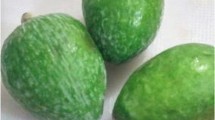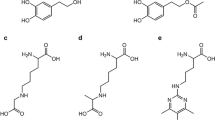Abstract
Glycation of proteins and their subsequent structural and functional modifications have been ascribed to play a prominent role in the pathogenesis of several secondary complications of diabetes, such as cataract and retinopathy. In addition, it plays a role in the generalized ageing process as well. Investigations have been conducted to explore the possibility of preventing the above process by use of pyruvate and a-keto glutarate as representatives of physiologically compatible keto acids. The results demonstrate that both these compounds are effective in preventing the initial glycation reaction as well as the formation of AGE products. Both these compounds also inhibit the generation of high molecular weight aggregates associated with cataract formation. Mechanistically, the preventive effects appear to be due to (1) competitive inhibition of glycation by the keto acids and (2) the antioxidant (radical scavenging) properties of these compounds. The results are hence considered usefu l from the point of view of developing these and other keto acid derivatives as pharmacological agents useful in preventing glycation related protein changes and consequent tissue pathological manifestations.
Similar content being viewed by others
References
Van Heyningen R: Formation of polyols by the lens of rats with sugar cataract. Nature (London) 184: 194–196, 1959
Varma SD, Mikuni I, Kinoshita J: Flavonoids as inhibitors of lens aldose reductase. Science 188: 1215–1216, 1975
Kinoshita JH: Mechanisms initiating cataract formation. Invest Ophthalmol 13: 713–724, 1975
Varma SD, Mikuni I, Kinoshita JH: Diabetic cataracts and flavonoids. Science 195: 205–206, 1977
Chylack L, Henriques HF, Cheng HM, Tung WH: Efficacy of alrestatin an aldose reductase inhibitor, in human diabetic and non-diabetic lenses. Ophthalmology 86: 1579–1585, 1979
Datiles M, Kinoshita JH: Galactose cataract prevention with sorbinil, an aldose reductase inhibitor: A light microscopic study. Invest Ophthalmol Vis Sci 22: 174–179, 1982
Varma SD, Kinoshita JH: The absence of cataracts in mice with congenital hyperglycemia. Exp Eye Res 19: 577–582, 1974
Benedek GB: Theory of transfarency of the eye. Applied Optics 10: 459–473, 1971
Vinson JA, Possanja CJ, Drack AV: The effect of ascorbic acid on galactose induced cataracts. Nutr Rep Int 33: 665–669, 1986
Srivastava SK, Ansari NH: Prevention of sugar induced cataracto-genesis in rats by BHT. Diabetes 11: 1505–1508, 1988
Henein M, Devamanoharan PS, Ramachandran S, Varma SD: Prevention of galactose cataract by pyruvate. Lens Eye Tox Res 9: 25–36, 1992
Stevens VJ, Rouzer CA, Monnier VM, Cerami A: Diabetic cataract formation and potential role of glycosylation of lens proteins. Proc Natl Acad Sci USA 75: 2918–2922, 1978
Monnier VM, Steven VJ, Cerami A: Nonenzymatic glycosylation, sulphydryl oxidation and high molecular weight aggregation of lens proteins in experimental sugar cataracts. J Exptl Med 50: 1098–1117, 1979
Swamy MS, Abraham EC: Lens protein composition, glycation and high molecular weight aggregation in ageing rats. Invest Ophthalmol Vis Sci 28: 1693–1701, 1987
Baynes JW: Role of oxidative stress in development complications in diabetes. Diabetes 40: 405–412, 1991
Namiki KM, Oka M, Otsuka M et al.: Chemiluminescence developed at an early stage of Maillard Reaction. In: Labuza et al (eds). ‘Maillard Reactions in Chemistry, Food and Ageing’. Royal Society of Chemistry Publishers, England, 1994, pp 88–94
Brownlee M, Vlassara H, Kooney A, Ulrich P, Cerami A: Amino-guanidine prevents diabetes-induced arterial protein cross-linking. Science 232: 1629–1632, 1986
Ou P, Wolff SP: Aminoguanidine: a drug proposed for prophylaxis in diabetes inhibits catalase and generates hydrogen peroxide in vitro. Biochem Pharmacol 46: 1139–1144, 1992
Varma SD, Ramachandran S, Devamanoharan PS, Morris SM, Ali AH: Prevention of oxidative damage to rat lens by pyruvate: A possible attenuation in vivo. Curr Eye Res 14: 643–649, 1995
Varma SD, Devamanoharan PS, Morris SM: Prevention of cataracts by nutritional and metabolic antioxidants. Critical Reviews in Food, Science and Nutrition 35: 111–129, 1995
Bradford M: A rapid and sensitive method for the quantitation of microgram quantities of proteins utilizing the principle of protein dye binding. Anal Biochem 72: 248–254, 1975
Laemelli UK: Cleavage of structural proteins during the assembly of the bacteriophage T4. Nature (London) 227: 680–685, 1970
Merril CR, Goldman D, Van Keuron ML: Simplified silver stain protein detection and image enhancement method in polyacrylamide gels. Electrophoresis 3: 17–23, 1982
Author information
Authors and Affiliations
Rights and permissions
About this article
Cite this article
Varma, S.D., Devamanoharan, P. & Ali, A. Formation of advanced glycation end (AGE) products in diabetes: Prevention by pyruvate and a-keto glutarate. Mol Cell Biochem 171, 23–28 (1997). https://doi.org/10.1023/A:1006846501081
Issue Date:
DOI: https://doi.org/10.1023/A:1006846501081




